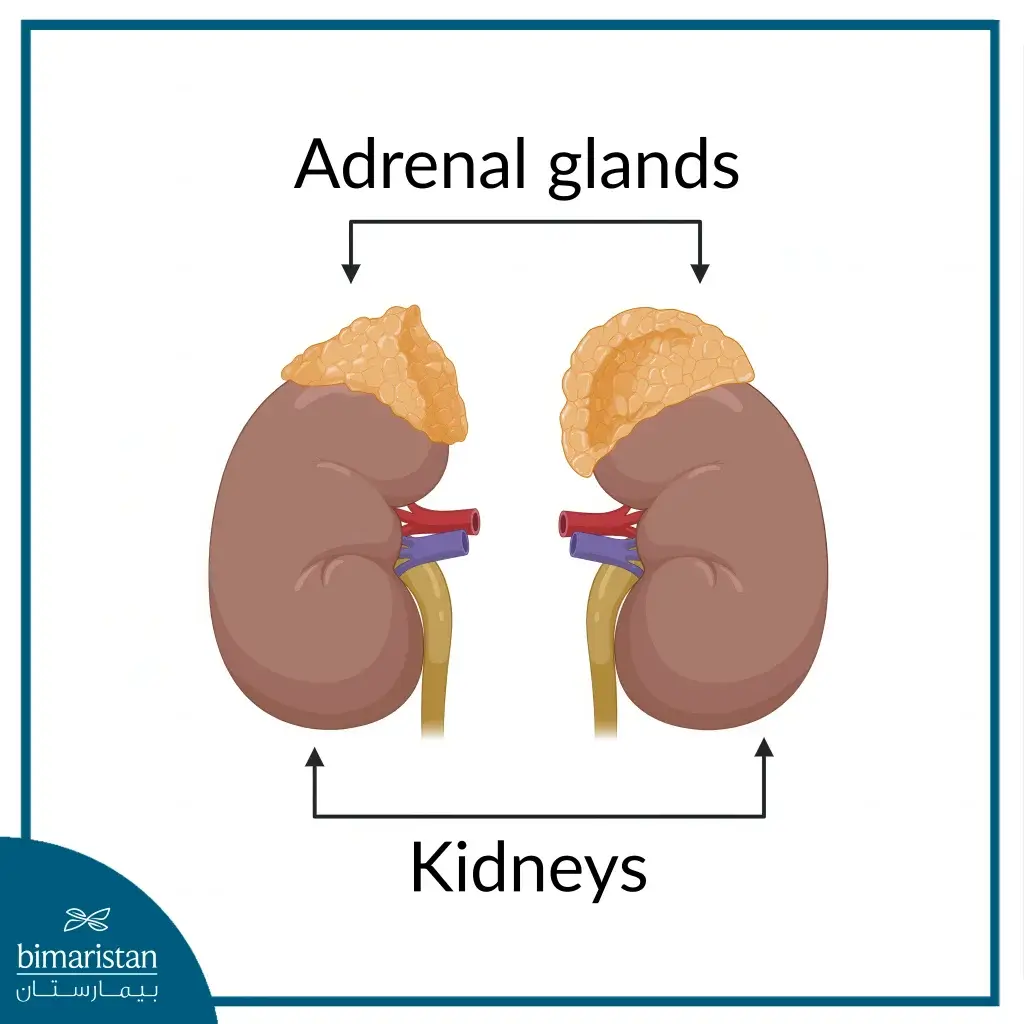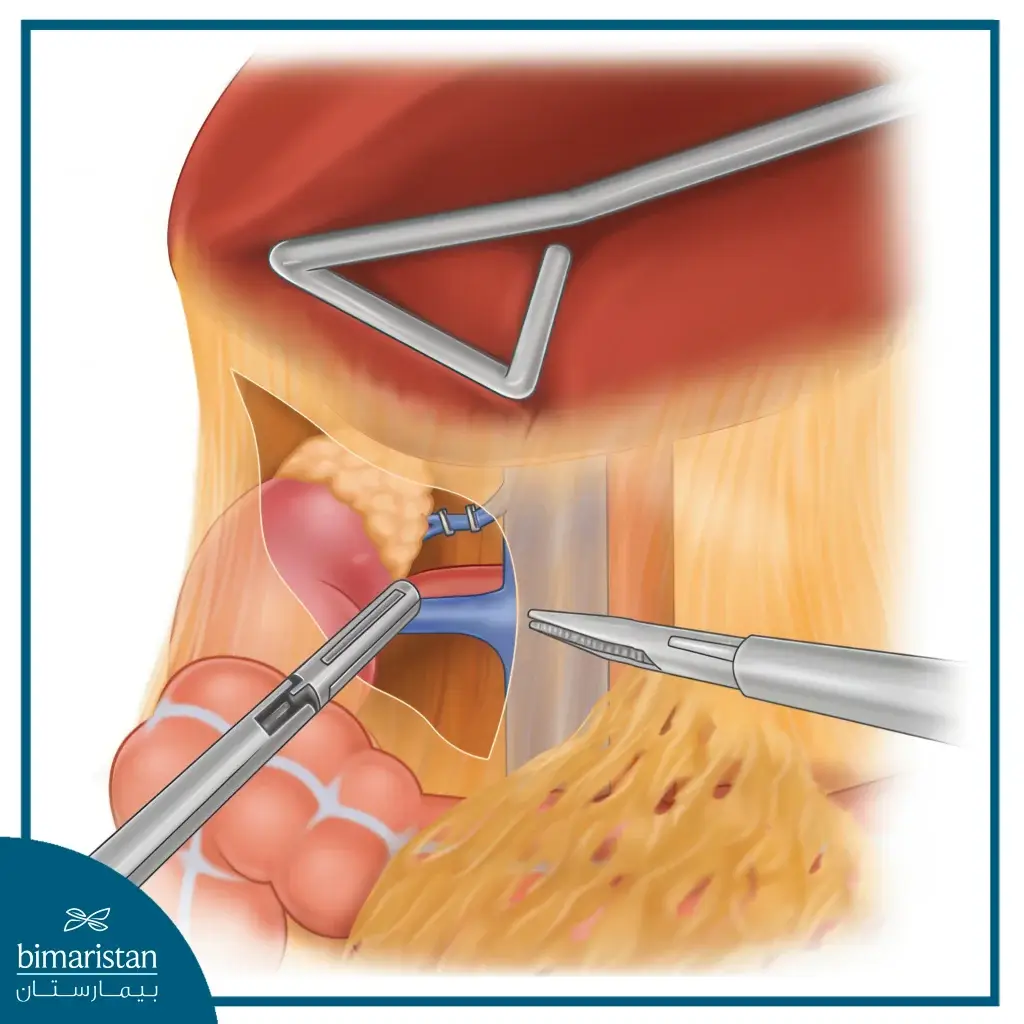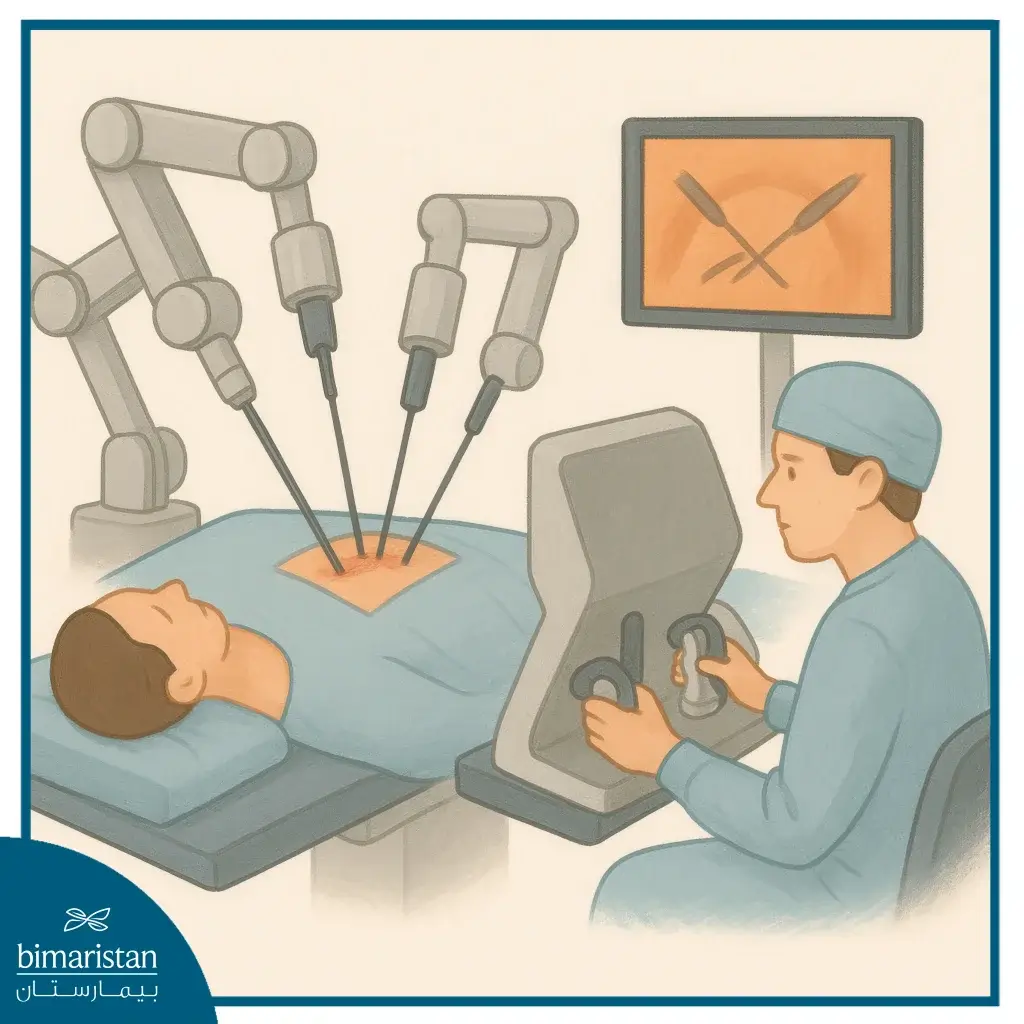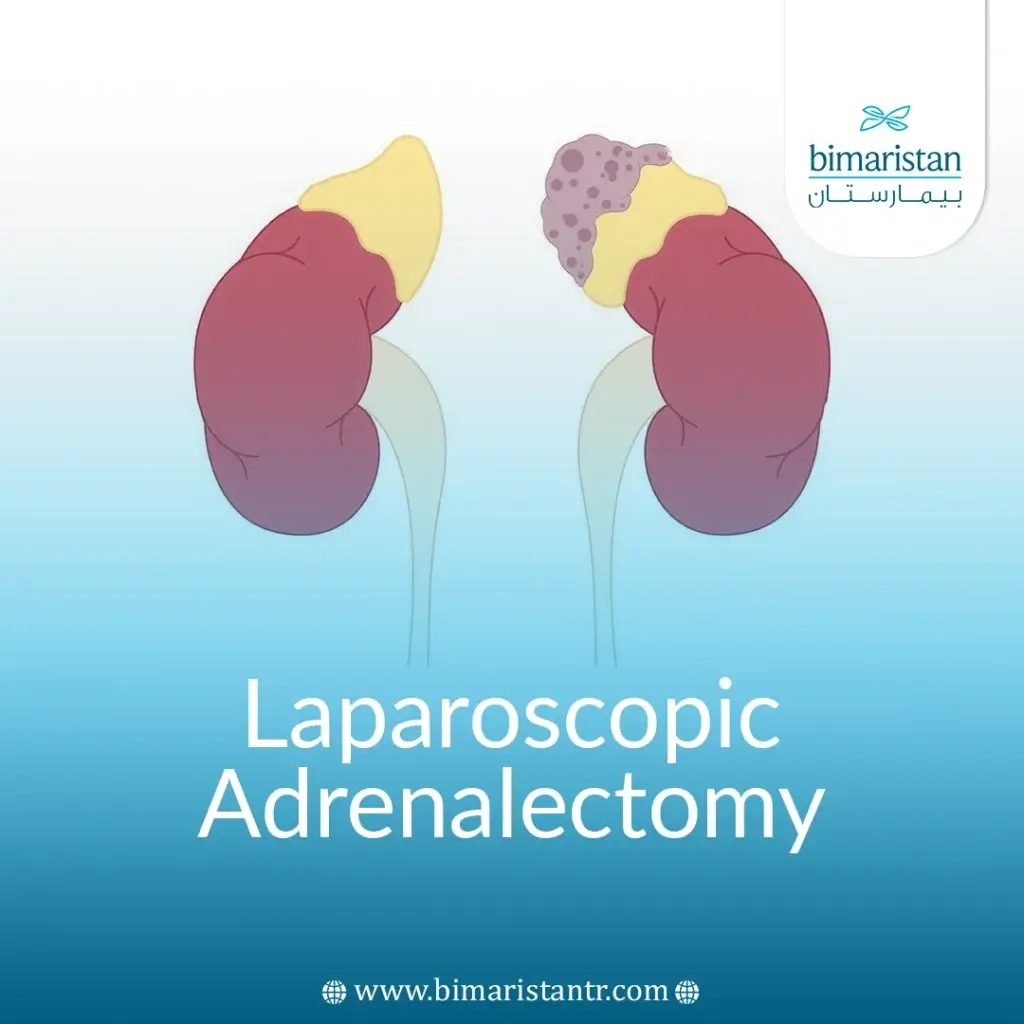Laparoscopic adrenalectomy is considered a modern procedure used to treat certain medical conditions of the adrenal gland. This procedure is characterized by being safe and effective, allowing for the precise removal of the gland without needing a large incision in the body. In this article, learn everything you need about laparoscopic adrenalectomy before, during, and after the procedure.
What is the adrenal gland?
The adrenal gland is a small organ in the upper abdomen, above each kidney. Each gland is about the size of your thumb and is triangular. These glands are considered the body’s primary endocrine glands. The adrenal gland secretes a range of essential hormones, including cortisol and aldosterone, which greatly influence nervous activity and help regulate the functions of other glands. These hormones directly affect metabolism, boost the immune system, and regulate blood pressure, blood sugar, fluid, and mineral levels, among other vital functions.

What are the reasons for adrenalectomy?
Adrenalectomy is often performed to remove tumors that have formed within the gland or are caused by metastases. Most tumors affecting the gland are benign and minor, while larger or malignant tumors, although relatively rare, can cause serious health issues.
Some individuals may also suffer from conditions related to adrenal gland activity, such as hyperactivity or hypoactivity. Hyperactivity of the gland has adverse effects, such as high blood pressure, increased fluid retention, and the formation of kidney stones. Conversely, hypoactivity of the gland can lead to low sodium and increased potassium levels, causing other health problems that affect the individual’s overall condition.
How does a patient prepare for laparoscopic adrenalectomy?
Preparation for laparoscopic adrenalectomy requires a thorough medical examination. The patient may need some tests to ensure they are healthy enough to undergo surgery. The surgeon’s clinic will instruct on what to do and what to avoid before the surgery. The specific instructions depend on the surgeon, but there are some standard guidelines to follow, including:
- Bathing: The patient is advised to bathe the night before or on the morning of the surgery, and the surgeon may request antibacterial soap.
- Fasting: The patient must stop eating and drinking at the time specified by the doctor before the surgery.
- Taking medications: On the morning of the surgery, the patient may take medications the doctor has indicated are allowed, with small sips of water.
- Stopping certain medications: The patient may need to stop taking certain medicines before the surgery, such as blood thinners, supplements, and drugs that affect the immune system. The surgeon should discuss this with the patient when scheduling the laparoscopic adrenalectomy.
- Seeking assistance after hospital discharge: The patient should consult the doctor or nurse about how much help they may need after returning home.
How is laparoscopic adrenalectomy performed?
Urologists and general surgeons perform adrenalectomy. The procedure is conducted under general anesthesia, ensuring the patient is completely unconscious and does not feel any pain during the operation.
The appropriate surgical method for the removal is determined based on the gland’s condition and the patient’s health and medical history. If there is a tumor in the gland, the size and type of the cancer will also influence the surgical option. Generally, adrenalectomy methods are divided into two kinds: laparoscopic adrenalectomy and open surgery.
Laparoscopic adrenalectomy is considered the preferred option for smaller glands. After anesthesia, the surgeon makes 1 to 4 small incisions (0.5-1 cm) in the abdomen or back. A laparoscope is inserted through these incisions, allowing the surgeon to see inside the patient’s abdomen during the procedure.
Then, tiny instruments are used to cut the skin and the soft tissues surrounding the adrenal gland and carefully remove it, enabling the surgeon to excise the gland completely. The adrenal gland is placed in a plastic bag and removed through one of the incisions. The laparoscopic procedure typically takes between one and two hours.
Laparoscopic adrenalectomy is categorized based on the number and location of the incisions into several types: standard laparoscopic surgery, posterior retroperitoneoscopic adrenalectomy (PRA), and robotic surgery.

Standard Laparoscopic Surgery
In standard laparoscopic surgery, the surgeon inserts a small camera called a laparoscope through one of the incisions in the abdomen. This camera monitors the internal organs and guides the procedure. Through the other incisions, the surgeon inserts instruments to remove the adrenal gland.
Posterior Retroperitoneoscopic Adrenalectomy (PRA)
In this type, the surgeon uses a small camera and incisions in the back instead of the abdomen, known as the posterior approach. The adrenal gland is removed through these incisions. Since the adrenal gland and kidneys are located at the back of the abdomen (retroperitoneal) and do not interfere with other abdominal organs, this approach is also called direct.
Robotic Surgery
Robot-assisted procedures can be used for laparoscopic adrenalectomy. This approach is similar to other laparoscopic surgeries but may require two or just one incision. Instead of moving the instruments manually, the surgeon controls them via mechanical arms while seated at a control unit next to the operating table.

After laparoscopic adrenalectomy
Most patients who undergo laparoscopic adrenalectomy recover more quickly compared to traditional open surgery. Patients typically stay in the hospital for one night after the procedure to monitor their condition and ensure that no complications occur. However, in some cases, the patient may need to stay longer if any health issues require additional follow-up.
After discharge from the hospital, patients usually need a recovery period of one to three weeks at home. This duration may vary depending on several factors, such as the patient’s overall health, the success of the surgery, and individual recovery responses. During this period, patients are advised to avoid strenuous physical activities such as lifting weights or engaging in intense exercise until their doctor permits. However, they can gradually resume some light daily activities over time.
Regular follow-up with the doctor is preferred after the procedure to monitor recovery and manage any medications the patient may need, especially if the removal has affected the hormonal balance in the body. If only one adrenal gland is removed and that gland does not produce large amounts of hormones, the other gland will compensate for the lost functions, meaning there is no need for hormone replacement therapy. However, if the removed gland produced excessive amounts of hormones, hormonal compensation will be necessary until the remaining adrenal gland regains its normal functions. In the case of the removal of both glands, it will be essential to take medications to replace the hormones that both glands used to produce for life.
What are the advantages of laparoscopic adrenalectomy?
Laparoscopic surgery has many benefits that make it an ideal option for adrenal gland removal. Among these features:
- More minor scars: The size of the incision and scars is smaller than those of open surgery.
- Less pain: Patients experience less pain after the procedure, facilitating recovery.
- Shorter recovery time: Laparoscopic adrenalectomy allows patients to return to their daily activities more quickly.
- Shorter hospital stay: Patients can return home within one or two days.
- Lower risk of complications during the healing period.
Unilateral or bilateral: Laparoscopic adrenalectomy can be performed to remove one adrenal gland (unilateral) or both glands (bilateral).
What are the contraindications for laparoscopic adrenalectomy?
Laparoscopic adrenalectomy has many benefits, but it may not be suitable in some cases, including:
- Tumor is too large: If the size of the tumor exceeds the limits appropriate for laparoscopic surgery.
- Excessive weight: Being overweight may affect the feasibility of the procedure.
- Surgeons believe open surgery is safer: The surgeon may prefer the traditional option for other medical reasons.
It is essential to consult a trained and qualified surgeon for laparoscopic adrenalectomy, as the surgeon can help determine whether this procedure is suitable for your health.
What are the possible complications of laparoscopic adrenalectomy?
Complications that may occur during or after the removal process include the following potential complications of laparoscopic adrenalectomy:
- Reaction to general anesthesia: Some patients may experience problems due to anesthesia.
- High or low blood pressure: Blood pressure levels may be affected during or after the procedure.
- Bleeding: Bleeding may occur during or after surgery.
- Injury to surrounding organs: There is a possibility of injury to organs near the surgical site.
- Infection or wound healing issues: Some cases may face wound healing or infection difficulties.
- Blood clots, heart attacks, and lung problems: These complications are rare but can occur after surgery.
Patients need to be aware of these risks when considering the procedure.
When should a patient visit their doctor after laparoscopic adrenalectomy?
The patient should schedule an appointment with the surgeon two to three weeks after the surgery. It is essential for the patient to contact the surgeon or family doctor if they experience any of the following problems after laparoscopic adrenalectomy:
- Fever: If the temperature is 101°F (39°C) or higher.
- Bleeding: Any unusual bleeding that requires attention.
- Increased abdominal swelling: If the patient notices unusual bloating.
- Persistent pain: If pain is not relieved by prescribed medications.
- Nausea or vomiting: Especially if the patient cannot eat or drink.
Monitoring health status after surgery and seeking help when needed is essential.
Conclusion
The laparoscopic adrenalectomy is a safe and effective option for treating various medical conditions. With proper preparation and follow-up after the procedure, patients can achieve positive outcomes and return to their daily lives quickly. Always consult your doctor to ensure the best healthcare.
Sources:

